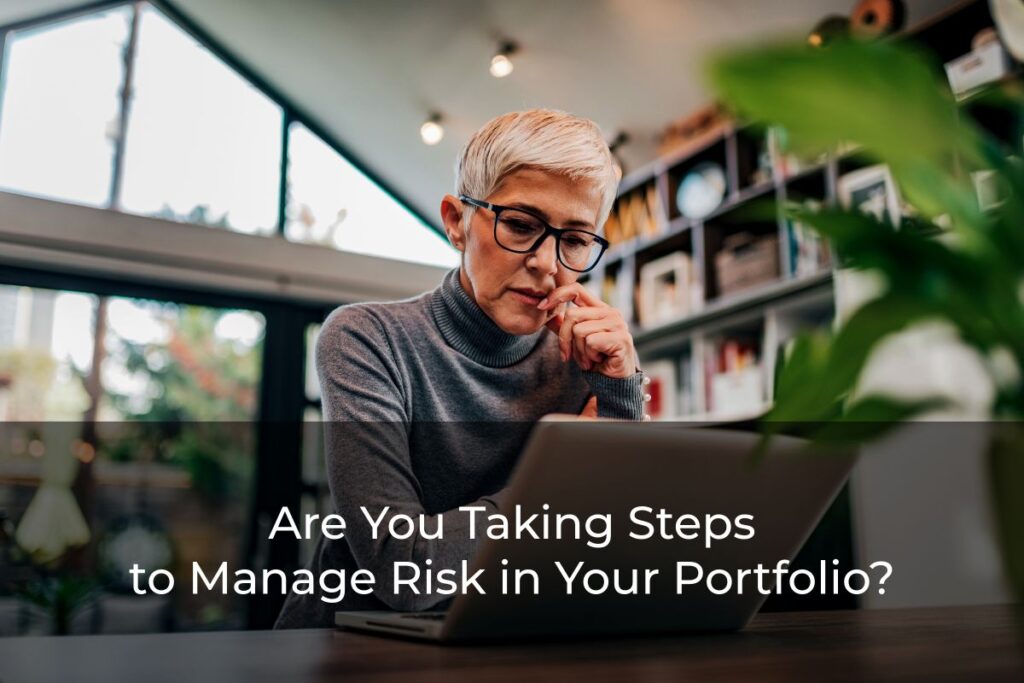Grow and Preserve Your Wealth with These Key Concepts
When making an investment, you always face a trade-off between risk and return. Taking risks can sometimes result in rewards, but this is only likely if your risk is properly managed. This starts with determining the appropriate level of risk for your portfolio, then calculating the existing risk and making sure it stays within your desired levels. By understanding and managing risk in investing, you can work toward growing and preserving your capital. In the article below, we’ll discuss several ways portfolio risk can be calculated and managed effectively.
How to Manage Portfolio Risk for Future Growth
Understanding the Basics of Investment Portfolio Risk
Portfolio risk is the combined risk of each individual investment within your portfolio. The various components in your portfolio and their weightings will impact how much exposure you have to different risks, such as market and systemic risks.
Knowing Your Risk Tolerance vs. Risk Capacity
Before constructing a portfolio, you need to determine how much you can afford to lose—both psychologically and financially. Typically, when people discuss risk tolerance, they define it as the level of loss you’re able to handle based on your financial situation and how close you are to retirement. However, it’s more complex than that.
When it comes to managing risk in investing, you need to think about both financial loss and psychological impact because money and emotions are deeply intertwined. No investor wants to lose enough capital that it causes them to make irrational decisions. This is where risk tolerance and risk capacity come into play.
Risk Capacity
Risk capacity refers to how much financial loss you can handle based on the time your portfolio has to recover from downturns. It’s closely related to your age and retirement plans. If you’re 20 or more years away from retirement and have a reliable income and savings, your risk capacity will generally be high. Conversely, if you’re close to retirement or have an unstable income, your risk capacity is lower because losing money on your portfolio near retirement could force you to withdraw from an impaired portfolio.
SEE ALSO: Mind Over Money: Navigating Investor Psychology Pitfalls
Risk Tolerance
Risk tolerance is your personal aversion to risk based on emotional responses to market events. This includes how much loss you can handle both financially and psychologically. Your feelings about investments and your financial situation will change over time, and so will your risk tolerance.
Successfully constructing the right portfolio involves understanding that your risk tolerance and risk capacity may not always align. To determine these, consider your portfolio value, time horizon, monthly income, expenses, income reliability, and your temperament regarding loss.
Ultimately, your risk tolerance and risk capacity might not match. For instance, you may enjoy the thrill of the stock market and have a high-risk tolerance, but your portfolio may not have the risk capacity to support such a high level of risk due to limited time to recover from potential losses.
Understanding and balancing your emotional risk tolerance with your logistical risk capacity is crucial for developing a strong portfolio and investment strategy.
Types of Risk in Your Portfolio
There are multiple types of investment risk at the portfolio and individual security levels. For individual securities, there are five types of risk that can be managed through diversification (i.e. spreading your investments across various assets to reduce risk and improve potential returns):
- Liquidity Risk
- Default Risk
- Regulatory/Geopolitical Risk
- Duration Risk
- Style Risk
There are also broader portfolio risks, which can be managed with creative diversification and other strategies. These include:
Market Risk
Also known as systemic risk, this is the biggest risk facing any portfolio. Most assets correlate, meaning a stock market correction will result in most stocks falling.
Inflation Risk
Owning stocks allows you to outperform inflation over the long term. Too little risk in your portfolio can result in your buying power not keeping up with inflation.
Reinvestment Risk
This relates to the bond portion of your portfolio. If you purchase bonds when yields are high, you earn those high yields even if interest rates fall. However, if yields are lower when the bond matures, the principal can’t be reinvested at a high yield.
Concentration Risk
If your portfolio has too much exposure to specific industry sectors, regions, or asset classes, you create systemic risk because these investments are impacted by the same economic forces.
SEE ALSO: Embrace the Power of Diversification to Strengthen Your Portfolio
Interest Rate Risk
This affects every portfolio but having your exposure analyzed by an experienced advisor – like a member of the team at Davidson Capital Management – can be helpful in managing risk in investing.
Measuring Your Portfolio Risk
There are multiple approaches to measuring risk, and it’s typically best to combine several methods. Volatility is commonly measured using standard deviation. A competent financial advisor can help you calculate your portfolio’s historical standard deviation and determine expected volatility.
Other risk measurement tools include the Sharpe ratio, which measures a portfolio’s incremental risk taken versus the reward provided, and the Sortino ratio, which considers downside volatility. Beta can also be used to measure the risk of an individual security relative to the market, as well as a diversified portfolio’s aggregate risk.
Managing Risk in Investing
Once you understand your risk, managing it is crucial. Properly managed risk is needed in portfolios to help them outpace inflation and provide capital appreciation opportunities for covering living expenses during retirement.
A significant step is diversifying your investments across various industry groups and asset classes. A balanced portfolio typically includes stocks, bonds, and cash. Stocks tend to produce the greatest long-term returns, bonds provide predictable income and hedge stock market volatility, and cash offers immediate liquidity.
Get a Portfolio Review and Analysis to Better Understand Your Risk
Risk is inherent in investing, but understanding and managing risk in investing are keys to growing your portfolio. By diversifying and balancing risk tolerance with risk capacity, you can work toward building a strong and resilient investment strategy.
If you’d like a professional portfolio review and analysis to better understand your risk, Davidson Capital Management can help. We are dedicated to actively managing your investments with a hands-on, goals-based approach. We’d be happy to answer any questions you have about proper risk management and show you how our time tested investment management philosophy can grow your portfolio, so please feel free to reach out today.




